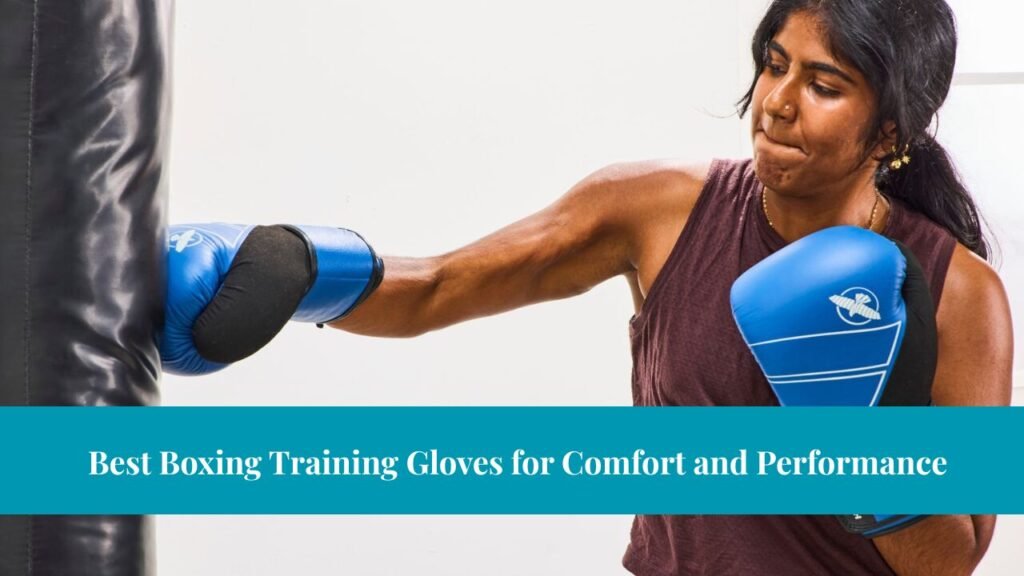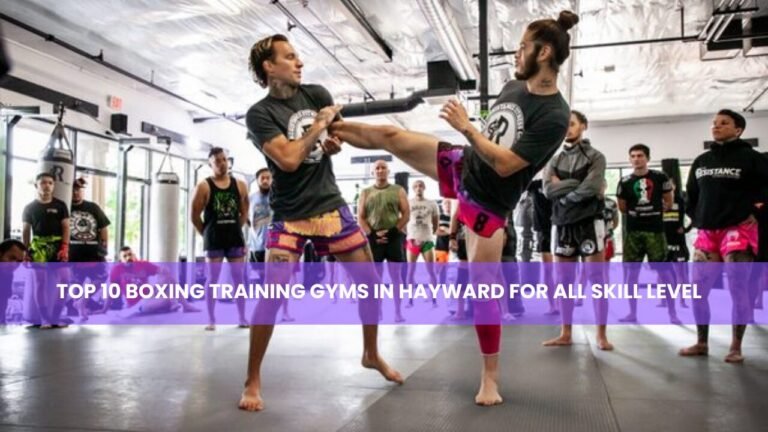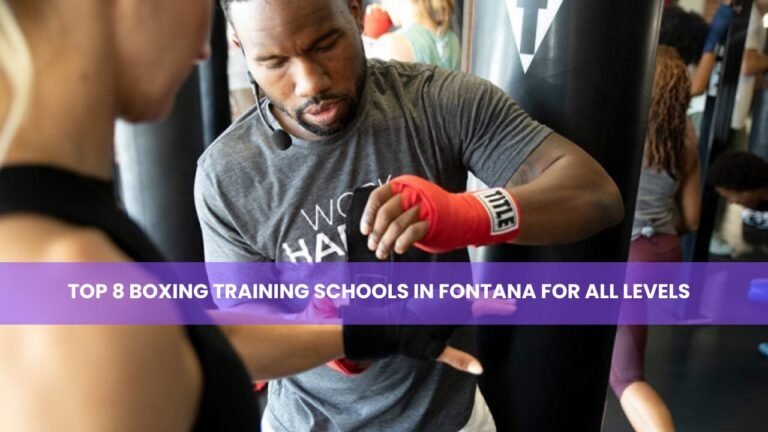They’re your most essential tool. Whether you’re a beginner, a fitness enthusiast, or an experienced fighter, investing in the right boxing training gloves can enhance performance, prevent injuries, and ensure a more effective training session. In this comprehensive guide, we break down everything you need to know about selecting, using, and maintaining your training gloves.
Why Boxing Training Gloves Matter
Boxing gloves protect your hands and wrists during punches while also safeguarding your sparring partner or punching bag. Using poor-quality or ill-fitted gloves can result in serious injuries, affect your form, and hamper your progress.
Proper gloves offer numerous advantages, including hand and wrist protection, better punching technique, enhanced comfort and support, improved durability for long-term use, and a reduced risk of training injuries. Professional fighters and coaches emphasize that proper glove choice is a foundation of effective training. Former amateur boxer and current coach Mark Rivera notes, “The right gloves can make or break a fighter’s hand health over time.”
Types of Boxing Gloves
Before diving into specifics, it’s important to understand the different types of gloves available and their purposes. Training gloves are designed for all-around use including bag work, mitt work, and light sparring, making them ideal for beginners and regular gym-goers. Bag gloves are specifically made for heavy bag work, being more compact with less padding than training gloves.
Sparring gloves are heavily padded to protect both you and your sparring partner and are typically 14 oz or heavier. Competition gloves are designed for professional fights and their size and weight are regulated by boxing organizations.
Mexican-style gloves have a narrower profile for more precise strikes and are popular among traditional boxers for mitt work and compact protection. Hybrid gloves are a modern design that combines sparring and bag features, convenient for those training across multiple styles in one session. Kids and youth gloves are lighter and smaller, designed for younger athletes with an emphasis on wrist protection and comfort.
How to Choose the Right Boxing Training Gloves
Selecting the best boxing training gloves depends on several factors, including your weight, training goals, and skill level. The weight of the gloves, measured in ounces, significantly impacts protection and performance. For instance, 8 to 10 oz gloves are used for competition, 12 oz for light training and bag work, 14 to 16 oz for sparring, and 18 oz or more for heavier fighters or extra protection.
The material of the gloves also plays a role. Synthetic leather is more budget-friendly but less durable, while genuine leather offers better durability, ventilation, and overall quality at a higher cost. Padding is another essential factor, with high-density foam padding offering better shock absorption and multi-layer padding providing additional wrist and knuckle protection.
Wrist support is crucial, so secure wrist straps or lace-up options provide better support, with Velcro straps offering more convenience for quick training sessions. Fit and comfort are important as well; gloves should fit snugly without being tight and should offer adequate thumb and finger spacing. Good ventilation, through breathable mesh panels or moisture-wicking lining, helps prevent odor and bacterial build-up. Lastly, using purpose-specific gloves for sparring, mitts, and bag work ensures longer glove life and optimized performance.
Best Boxing Training Gloves for Different Skill Levels
The following recommendations are based on user reviews, coach feedback, and product tests from real athletes. Beginners may prefer gloves like the MCD Training Gloves, which are affordable, lightweight, and easy to use, or the Green Hill Tiger Series, which is good for basic technique training.
Intermediate boxers could benefit from gloves such as the Everlast Pro Style Training Gloves, known for their solid construction and good wrist support, or the Green Hill Alpha Pro, which features durable leather and multi-layer padding. The Adidas Hybrid 100 is also a popular option designed for all-purpose use with modern moisture-wicking materials.
Advanced fighters often go for premium quality gloves such as the Winning Training Gloves, which offer exceptional protection and are popular among professional fighters. The Cleto Reyes Hook & Loop gloves are professional-grade and handcrafted, while the Hayabusa T3 gloves are engineered for elite-level performance with multi-directional wrist support and ergonomic design.
Maintenance Tips for Longevity
To keep your gloves in optimal shape, it’s important to air-dry them after every session and use glove deodorizers or anti-bacterial sprays. Avoid storing your gloves in your gym bag and regularly wipe the interior with a damp cloth. Inspect for tears and padding compression to ensure continued protection, and store them in a dry, ventilated area.
Coach Alex Kim, an MMA coach with over 10 years of experience, advises that glove hygiene is just as important as glove quality, warning that neglecting care shortens glove life and could cause infections.
Additional Gear to Complement Your Training Gloves
Complementary gear plays a critical role in supporting your training experience. Hand wraps should always be worn to stabilize your wrists and protect your knuckles, with breathable cotton or gel-lined options being popular. Glove liners add an extra layer of protection and sweat absorption, reducing glove odor and increasing longevity. Punching mitts and pads help improve accuracy and timing, making them perfect for partner drills with trainers.
Heavy bags and speed bags are essential for developing power and precision but must be used with appropriate gloves to prevent overuse injuries. Boxing shoes provide necessary traction and ankle support, while remaining lightweight and flexible for quick footwork. For sparring, headgear and mouthguards are essential to prevent cuts, bruises, and dental injuries.
How Boxing Glove Design Has Evolved
Historically, boxing gloves were designed with a single layer of horsehair padding. Today, modern gloves incorporate multi-layered foam and ergonomic contours for better fist alignment. Breathable interiors and antimicrobial linings have become standard, along with reinforced seams and wrist compartments for enhanced durability. Innovations in recent years include smart gloves with impact sensors, eco-friendly materials for sustainable production, and custom-fit technology for personalized glove molds. These developments have significantly improved both performance and athlete safety, allowing for longer and more intense training sessions.
Common Mistakes to Avoid
There are several mistakes that boxers commonly make when choosing or using gloves. Selecting the wrong glove size can lead to poor performance and increased injury risk. Overusing sparring gloves for bag work wears them out prematurely. Ignoring wrist support and fit compromises safety, while neglecting glove hygiene can cause infections. Choosing cheap, low-quality materials and skipping hand wraps reduces overall protection. Not testing gloves for fit before purchase or continuing to use old or worn-out gloves during high-impact training can significantly hinder your boxing progress.
FAQs
What size boxing training gloves should I use?
The size depends on your body weight and training purpose. Generally:
- Under 120 lbs: 12 oz
- 120-150 lbs: 14 oz
- 150-180 lbs: 16 oz
- Over 180 lbs: 18 oz or higher
Can I use the same gloves for bag work and sparring?
It’s not recommended. Bag work wears out padding quickly, reducing protection for sparring. Invest in separate gloves for each purpose.
How often should I replace my gloves?
With regular use, replace training gloves every 6-12 months or when you notice wear and tear in the padding or outer material.
Are lace-up gloves better than Velcro?
Lace-up gloves offer a more secure fit but require assistance. Velcro is more convenient and ideal for solo training sessions.
How do I clean the inside of my gloves?
Use a mild disinfectant spray or vinegar-water solution, then air dry completely. Avoid soaking gloves or using harsh chemicals.
What’s the best brand for boxing training gloves?
Brands like Winning, Cleto Reyes, Hayabusa, and Everlast are favored among athletes and coaches. Choose based on your training intensity, budget, and fit preferences.
How do I know when to move up in glove weight?
If you’re progressing in training intensity, sparring heavier opponents, or experiencing soreness, consider moving to a heavier glove for better protection.
Conclusion
Choosing the right boxing training gloves can elevate your performance and protect your hands throughout your training journey. Prioritize comfort, protection, and quality, and you’ll find a pair that helps you strike with confidence. Visit boxing essential to explore more.




